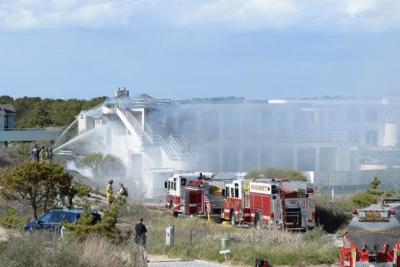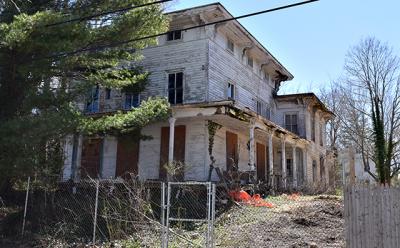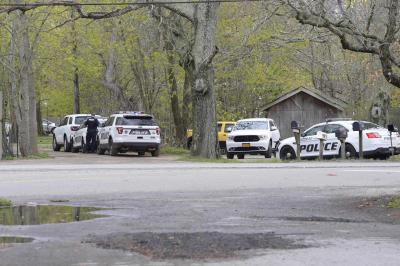Nature Notes: Vicarious Birding
Nature Notes: Vicarious Birding

We don’t think of trees as flowering plants, but they are. Oak flowers are just past peaking. The male flowers, called catkins, have shed most of their pollen and are dropping shriveled and brown en masse. This Monday morning my black truck had become yellow and black, as it was covered with the last pollen to be released from my scarlet and black oak trees, which have now turned their attention to expanding their leaves. Makes sense, doesn’t it? The flowers precede the leaves because the female flowers, the aments, are more efficiently pollinated when the leaves don’t get in the way of the wind-born pollen.
But wait, the breathing difficulties those of us have been experiencing from the oaks whose leaves have bristle-tipped edges, are far from over; the white oaks, which invariably flower and leaf out two weeks or more after, are just getting started. Then we must suffer the pollen from the pitch pines, hickories, and sassafras. It’s not pollen from shrubs and flowers that plagues allergy sufferers throughout the month of May; it’s the pollen from trees.
On Friday morning I heard my first Baltimore orioles. They time their arrival to the expansion of the oak and hickory leaves, and they were right on time.
They weren’t the only bird species to fly in last week. Karen and Barbara Rubinstein went out on Friday and walked the Stony Hill trail in Amagansett.
They heard and saw the Baltimore oriole, but also nine different tropical warblers species, about half of which breed locally and half of which flies on to breed in New England, Canada, and upstate New York.
During several hours of listening and observing they encountered at least 44 different species in that relative small area of deciduous woods. Some, like the summer tanager, white-eyed vireo, parula warbler, indigo bunting, and yellow-billed cuckoo, are rarely seen locally. They also observed two other species which 10 or 15 years ago you would hardly expect to find in the area, the turkey vulture and fish crow. Birders almost never tally a fish crow by seeing it; it is a mite smaller than our common crow, but its distinctive nasal caw caws reveal its presence without fail. These days, you would be hard-pressed to find the common crow in downtown Sag Harbor, Bridgehampton, or Southampton Village. These busy areas have been all but taken over by the fish crow from the south.
If you traveled that same trail 45 years ago, you would have been hard pressed to find a mockingbird, tufted titmouse, cardinal, or red-bellied woodpecker, as these now-common birds from more southern climes had yet to set up camp here. The Rubinsteins found one or more of each, plus a house finch, a southwestern United States species, and one that supposedly escaped from a Brooklyn pet store during the first quarter of the 20th century, and then bred locally and spread throughout Long Island, until by the 1980s it had become as common as the house sparrow, another longstanding introduced species.
I couldn’t find the robin on the list Karen sent me, but thus far this year it’s been the most ubiquitous bird to cross my path. On just about every road shoulder or green lawn I’ve driven past during April and so far in May, there has been a male robin or two.
Among the prettiest birds the two encountered were the male rose-breasted grosbeak and scarlet tanager, two birds that are a bit rare as breeders here but which always pass through. The Stony Hill woods, Grace Estate woods, and Northwest Woods are good places to find and hear them during the nesting season.
It was also promising to see the wood thrush, which used to be a common breeder, on their list, as well as the ovenbird and eastern towhee. The latter two species, which nest on the ground, have become rare as breeders here over the past three or four decades.
There are two cuckoo species that visit us and sometimes breed here, the yellow-billed and black-billed cuckoos. Unlike the European cuckoos they are not nest parasites like the brown-headed cowbirds. Both cuckoos are great wormers and good to have around when gypsy moth caterpillars strike, as they just may this spring. Karen and Barbara recorded the yellow-billed cuckoo but not the black-billed one.
If Barbara and Karen, and the other wonderfully astute birders in the area like those two, keep sending me their observations, I will be able to vicariously see and hear those birds and never contract Lyme disease or babesiosis again.
Larry Penny can be reached via email at [email protected]







